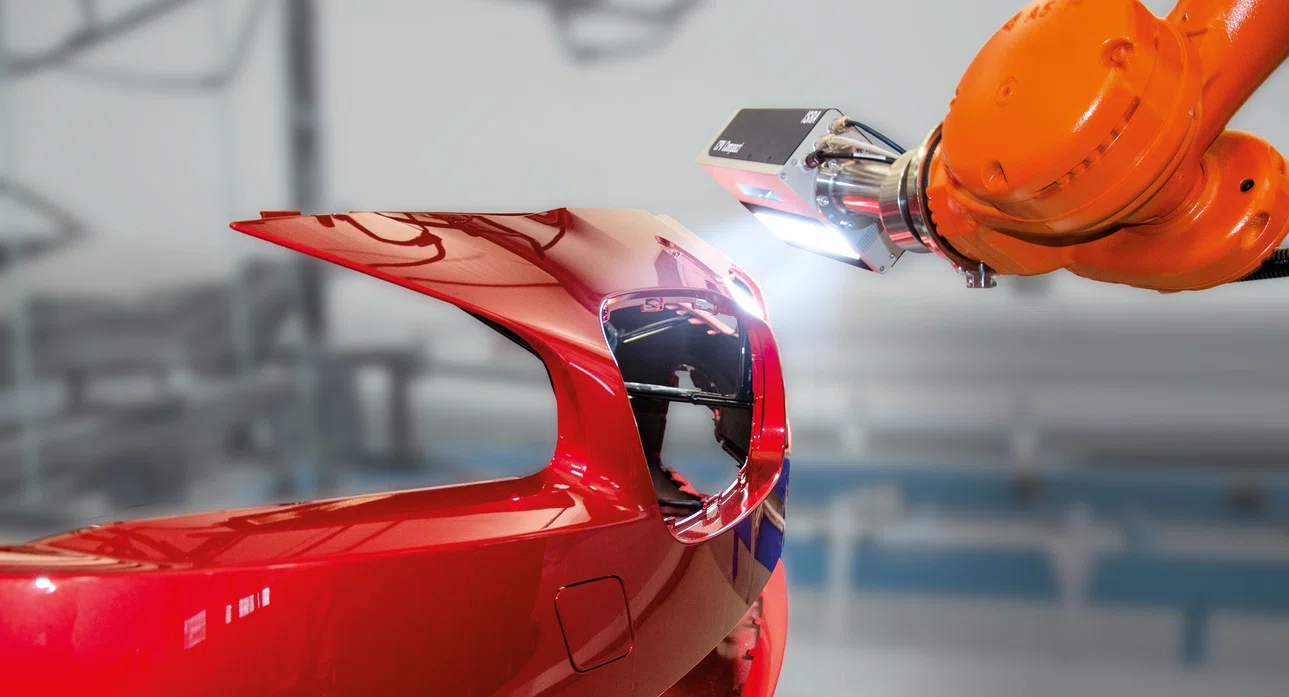


result
Search
A MAGAZINE FROM ATLAS COPCO GROUP
Sustainable technologies
Markets
Smart manufacturing
Our culture
Service and Consulting
Energy efficiency

PERFECT
VISION
Fully autonomous production is no longer an illusion. Thanks to extremely precise optical sensors boosted by embedded computing power, machines are now able to produce top quality at record speed.
Industrial production is becoming ever faster, more flexible and self-governing. This puts very high demands on reliable item identification and quality inspection. As these tasks must be performed in a split second, it all comes down to smart machines. The human eye is simply not fast or focused enough. Luckily, industrial robots equipped with smart and precise computer vision are ready to take up the challenge.
When quality is key
Machine vision technology has been around for decades, ever since robots and other machines were equipped with cameras. Today, machine vision systems are frequently used in assembly processes, autonomous vehicles, food production, item packaging and logistics – even to enhance medical examinations.
The systems are nowadays digitally advanced with high-resolution lenses, extremely sensitive sensors and fast-switching LED lights. With the help of 3D technology, they can perceive the depth and different angles of an item and detect deviations down to the nano millimeter level. When equipped with infrared radiation functionality, the systems are able to create thermal “heat maps” to scan and identify items. The cameras and sensors are complemented by software solutions that capture data and use it to make decisions and instruct the hardware.
In industrial manufacturing, the systems are often mounted on, or embedded in, robots working on the actual production line. Their visual measuring is extremely quick and precise, even at very high speeds, and instantly detects and classifies scratches, dents, color deviations, or other defects. This is particularly important when surface quality is key, like in the production of sheet metal, glass, paper, and critical electronic components such as semiconductors.
Besides material inspection, machine vision systems can be used to ensure that pieces are picked and placed correctly and sorted in the right order. This saves time and improves overall production efficiency. The system software also enables self-teaching, and machines can learn how to recognize defects or patterns common for a specific product model, for example, to further improve the production process.
Machine vision systems are able to perform ultra-fast measuring and inspections down to the nano millimeter level. This is extra useful in production flows where surface quality is key, such as bumper inspection, glass, paper and electronic components.


Renewable energy is a growing field and we want to be part of this transition. This ambition drives our efforts in developing leading technologies for the solar and photovoltaic industry.”
Tomas Lundin
President,
Machine Vision Solutions division

ISRA’s sensor systems permits intelligent robot “bin picking”, which is a key part of automated manufacturing. Robot vision, special illumination and algorithm-based 3D detection of an object‘s position and orientation enable highly flexible removal of unsorted components from bulk containers. The sensors offer the highest degree of accuracy, even for large components.
Entering a new fie
In 2020, Atlas Copco moved into the field of machine vision to strengthen its industrial assembly expertise and support customers on their journey towards smart productivity. By acquiring Germany-based ISRA VISION, a global leader in machine vision solutions, and Perceptron, a U.S. company with almost 40 years of experience in 3D measurement, a new technology division was established, fully focused on machine vision. The two brands are complemented by QUISS, a technology driver in bead inspection and part of the Atlas Copco Group since 2018.
“Machine vision is a very exciting field for Atlas Copco as it complements our automation and robotic solutions for manufacturing. It is also highly innovative and combines advanced software and hardware technology, which is right up our alley,” says Tomas Lundin, President of the new Machine Vision Solutions division. “By acquiring this expertise, we can now provide industrial assembly technologies and machine vision solutions for the same applications, like car manufacturing, and help our customers set up smooth and smart production flows.”
Eyes set on renewables
One important customer segment is renewable energy, and solar power in particular. Solar panels must have a flawless surface in order to capture the energy efficiently.
Through ISRA, Atlas Copco develops optical inspection systems for complete quality control of solar panels, from glass production to solar cells and entire modules. The highly precise solutions help producers improve efficiency, performance and throughput – all important steps towards making solar technology more affordable.
Suggested Articles
Follow us on:
CONTACT US | Download the 2021/2022 issue | ©Atlas Copco AB



